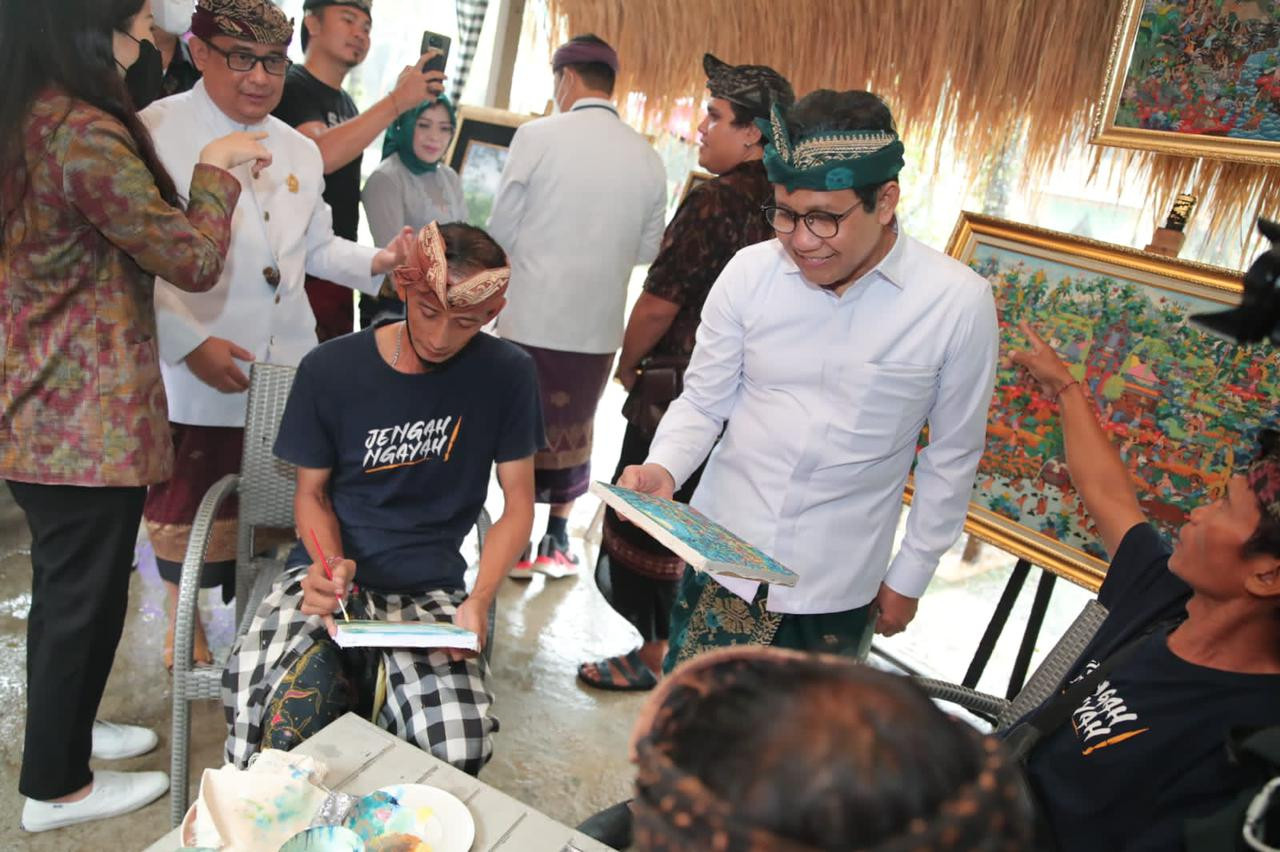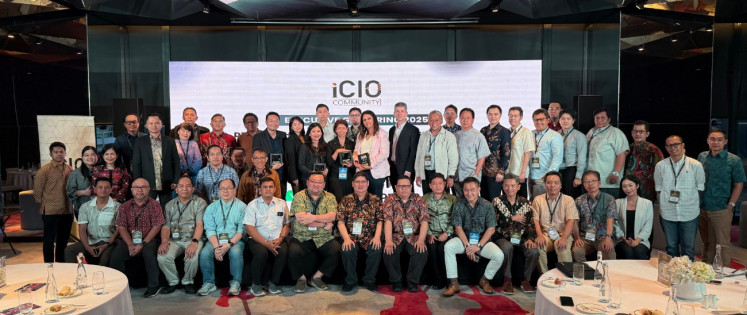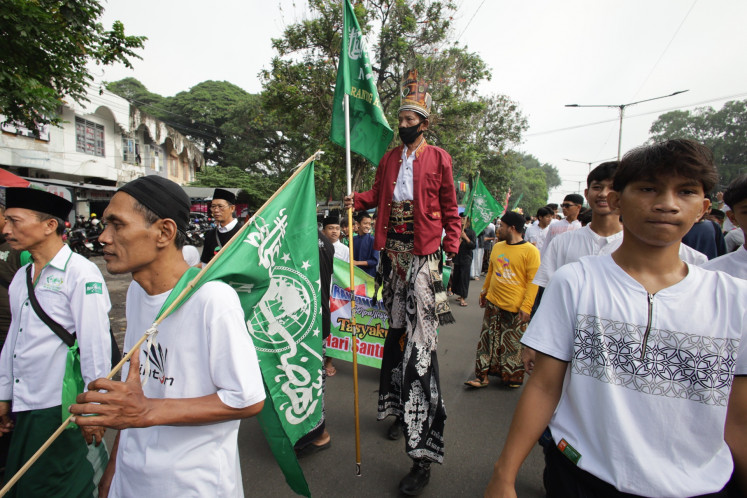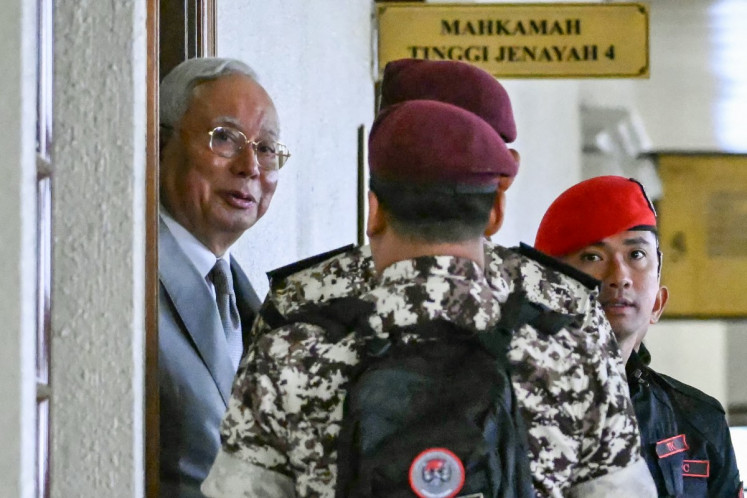Popular Reads
Top Results
Can't find what you're looking for?
View all search resultsPopular Reads
Top Results
Can't find what you're looking for?
View all search resultsMore villages benefit from govt village fund
Change text size
Gift Premium Articles
to Anyone
M
ore villages throughout Indonesia have elevated their development status thanks largely to the government’s village fund initiative.
Villages, Disadvantaged Regions and Transmigration Minister Abdul Halim Iskandar said on Tuesday that 6,238 independent villages, 33,902 developing villages, 9,584 disadvantaged villages and 4,982 highly disadvantaged villages had been recorded this year.
In 2015, only 174 independent villages existed, but “now we have more than 6,000 in 2022. This is thanks largely to an efficiency policy that the President has instated related to the village funds,” Minister Abdul Halim said at a press conference in Ubud, Bali.
Some 122 villages that were designated highly disadvantaged in 2015 had elevated their status to independent villages by this year.
“The independent villages are not only in Java but also outside Java, such as in East Kalimantan and West Kalimantan. This is evidence that village development under the village fund is not Java-centric, as the President aspires to develop the archipelago in a sustainable and integrated manner,” he said.
The all of 2015’s disadvantaged and highly disadvantaged villages in the provinces of Bali, East Java, Yogyakarta, West Java and the Banka Belitung Islands had reached higher levels by this year.
Minister Abdul Halim emphasized the importance of promoting self-reliance in village fund management, including for project planning and purchasing materials, to ensure that money circulated in the village and that rural residents could increase their purchasing power.
The minister said the government had transferred Rp 34.7 trillion to village funds this year as of July 12, up 21 percent from the Rp 28 trillion disbursed in the same period in 2021.
“This means that much progress has been made thanks to the government’s step of focusing more on accelerating the national economic recovery at the rural level,” he said.
The village funds have been disbursed to 73,255 villages – 98 percent of villages – up 6 percent from the same period last year. “So, the increase is seen in both the amount of disbursed village funds and the number of villages that receive the funds,” he said.
Of the amount, Rp 9.549 trillion has been earmarked for village fund unconditional cash transfers to families, Rp 1.82 trillion for manpower-intensive projects, Rp 2.94 trillion for the COVID-19-safe village program, Rp 5.95 trillion for the village food resilience program and Rp 1.193 trillion for other village activities.
Food resilience
Of the allocated Rp 13 trillion for the food resilience program, Rp 5.95 trillion has been utilized
“This is good even though it’s still the middle of the year. Focus should be given to food resilience,” Abdul said.
In line with the President’s instruction to focus on issues of food availability, “hopefully, with the support of rural food resilience, Indonesia will not suffer the [world] food crisis as severely as some other countries”.
He said the government would soon issue guidelines for utilizing 20 percent of the village funds for food resilience to anticipate a food crisis.
The government’s policy of unconditional cash transfers would remain effective in 2022, and in 2023, it would be allocated to help families that faced extreme poverty.
Abdul said labor-intensive projects were also a significant part of boosting rural people’s purchasing power because in the program, 50 percent of the village budget for infrastructure development was to be financed in cash.
“The program is targeted to poor, unemployed and marginalized people,” he said.
According to the minister, the cash-for-work program, which aims to enhance rural people’s purchasing power, particularly families from the marginal groups, involved 9,228 local workers, of whom 5,515 were women.
“This is in line with our hope that the number of women, particularly those playing the role as a family head, has shown an increasing trend,” he said.
He said he had signed a regulation on a new village development index. The index, which covers social resilience, the economy and the environment, will serve as a basis of calculation for the village funds for 2023.
The government will accelerate the disbursement of village funds to independent villages. As many as 24 governors and 407 regents and mayors across Indonesia have adopted the index as a parameter for realizing the vision and mission of the independent village, according to the minister.
The minister also noted that village tourism had bounced back, especially after the government permitted the Idul Fitri tradition of mudik (exodus) for the first time in two years.
Internet-based promotion had also contributed to village tourism, he said.
Although tourism has yet to reach pre-COVID-19 levels, the money in circulation from tourism in 2022 reached 9.8 trillion in 2021 and 5.5 trillion in 2020.
The press conference also revealed village tourism development plans in Sayan village, Ubud, Bali. The village is exploring the possibility of presenting reliefs depicting scenes from folklore in the village’s river basin area to attract more international tourists as part of local nature and cultural conservation efforts.
“That’s an example of how we build culture and tradition, with tourism development as a bonus. I agree with the concept,” he said.
“It’s good to continue to ‘think globally and act locally’, which gives benefits economically, environmentally and culturally. This means that although we think globally, we stick to our origins, such as Balinese, Javanese, Batak, Menado, etc.,” he said.










